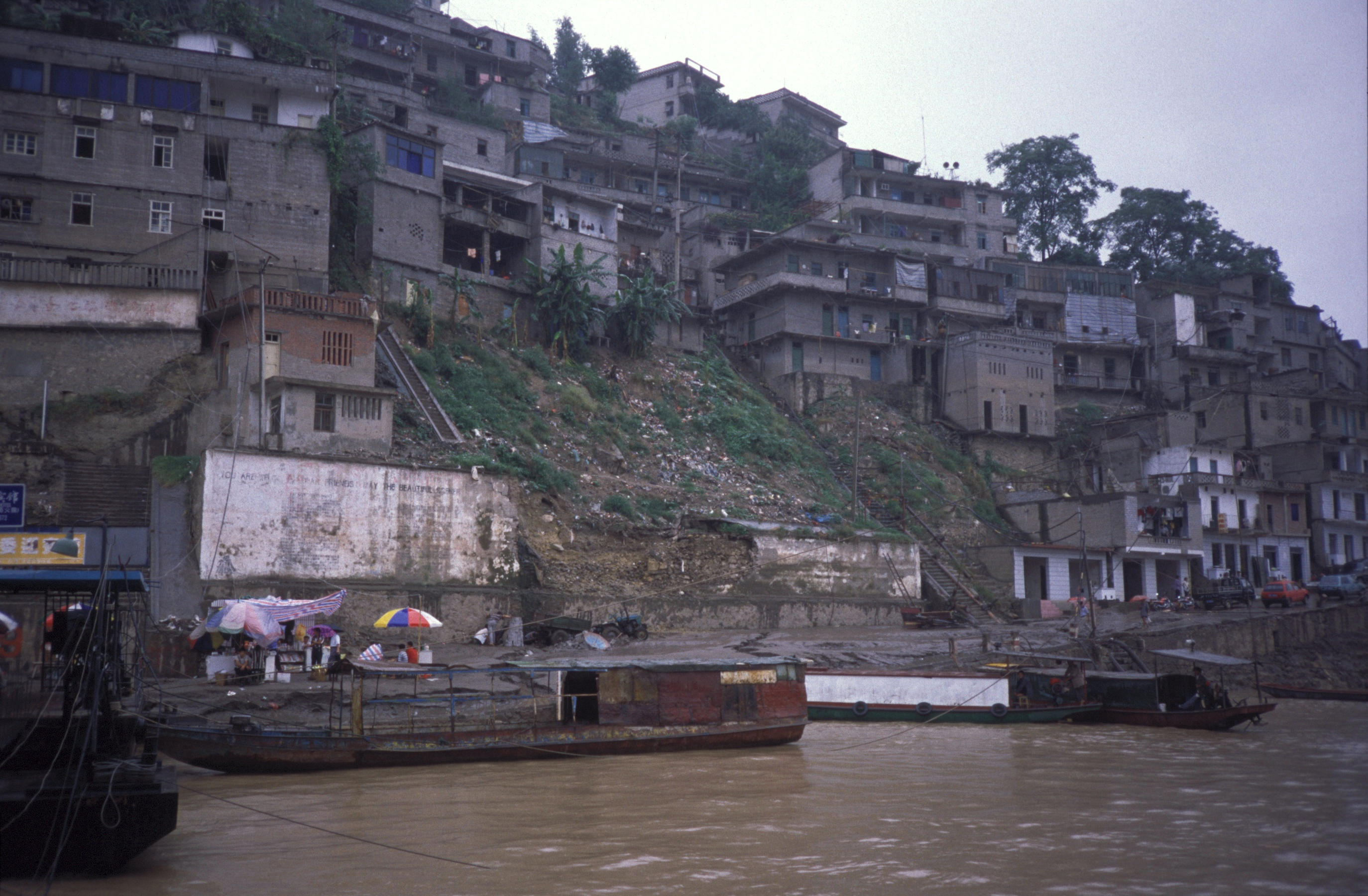Wu Gorge on:
[Wikipedia]
[Google]
[Amazon]


 Wuxia Gorge (), sometimes called Great Gorge (), is the second gorge of the
Wuxia Gorge (), sometimes called Great Gorge (), is the second gorge of the


 Wuxia Gorge (), sometimes called Great Gorge (), is the second gorge of the
Wuxia Gorge (), sometimes called Great Gorge (), is the second gorge of the Three Gorges
The Three Gorges () are three adjacent and sequential gorges along the middle reaches of the Yangtze River path, in the hinterland of the People's Republic of China. With a subtropical monsoon climate, they are known for their scenery.
The T ...
system on the Yangtze River
The Yangtze or Yangzi ( or ) is the longest river in Eurasia and the third-longest in the world. It rises at Jari Hill in the Tanggula Mountains of the Tibetan Plateau and flows including Dam Qu River the longest source of the Yangtze, i ...
, People's Republic of China. Formed by the Wu River, it stretches from Wushan to Guandukou, and is located downstream of Qutang Gorge and upstream of Xiling Gorge. The gorge straddles the boundary between Wushan County of Chongqing
ChongqingPostal Romanization, Previously romanized as Chungking ();. is a direct-administered municipality in Southwestern China. Chongqing is one of the four direct-administered municipalities under the State Council of the People's Republi ...
Municipality (formerly part of Sichuan
Sichuan is a province in Southwestern China, occupying the Sichuan Basin and Tibetan Plateau—between the Jinsha River to the west, the Daba Mountains to the north, and the Yunnan–Guizhou Plateau to the south. Its capital city is Cheng ...
Province) and Badong County
Badong County () is a county located in western Hubei province, People's Republic of China, bordering Chongqing municipality to the west. It is the northernmost county-level division under the administration of Enshi Tujia and Miao Autonomous Pref ...
, Hubei
Hubei is a province of China, province in Central China. It has the List of Chinese provincial-level divisions by GDP, seventh-largest economy among Chinese provinces, the second-largest within Central China, and the third-largest among inland ...
Province.
The gorge has been known as the Wuxia Gorge since at least the Three Kingdoms period, when it was recorded in the geographical treatise '' Shui Jing Zhu''. In 589 AD, General Lü Zhongsu of the Chen dynasty
The Chen dynasty (), alternatively known as the Southern Chen (南陳 / 南朝陳) in historiography, was a Dynasties in Chinese history, Chinese imperial dynasty and the fourth and last of the Northern and Southern dynasties#Southern dynasties, ...
stationed troops in the Wuxia and Xiling Gorges in an attempt to stop the advancing Sui dynasty
The Sui dynasty ( ) was a short-lived Dynasties of China, Chinese imperial dynasty that ruled from 581 to 618. The re-unification of China proper under the Sui brought the Northern and Southern dynasties era to a close, ending a prolonged peri ...
armies. Tang dynasty
The Tang dynasty (, ; zh, c=唐朝), or the Tang Empire, was an Dynasties of China, imperial dynasty of China that ruled from 618 to 907, with an Wu Zhou, interregnum between 690 and 705. It was preceded by the Sui dynasty and followed ...
poet Yang Jiong wrote a classical poem entitled "Passing Wuxia Gorge" ().
Among the Twelve Peaks of the Wuxia Gorge, the most spectacular is the Goddess Peak. Legend has it that this peak is the incarnation of Yaoji
Yaoji (), is a Chinese gods and immortals, Chinese goddess of Wu Gorge, Wu Mountain. A shaman and master herbalist, Yaoji is responsible for the presence of many medicinal herbs on Earth. She is a protective weather goddess who raises and soothes ...
who assisted Yu the Great in controlling the waters.
The mountains on both sides of the Yangtze, through which the river cuts the Wuxia Gorge, are known as the Wu Mountains (''巫山, Wū Shān'').
References
*''Zhongguo Gujin Diming Dacidian'' 中国古今地名大词典 (2005). Shanghai: Shanghai Cishu Chubanshe 上海辞书出版社. Page 1456. Canyons and gorges of China Landforms of Hubei Landforms of Chongqing {{hubei-geo-stub